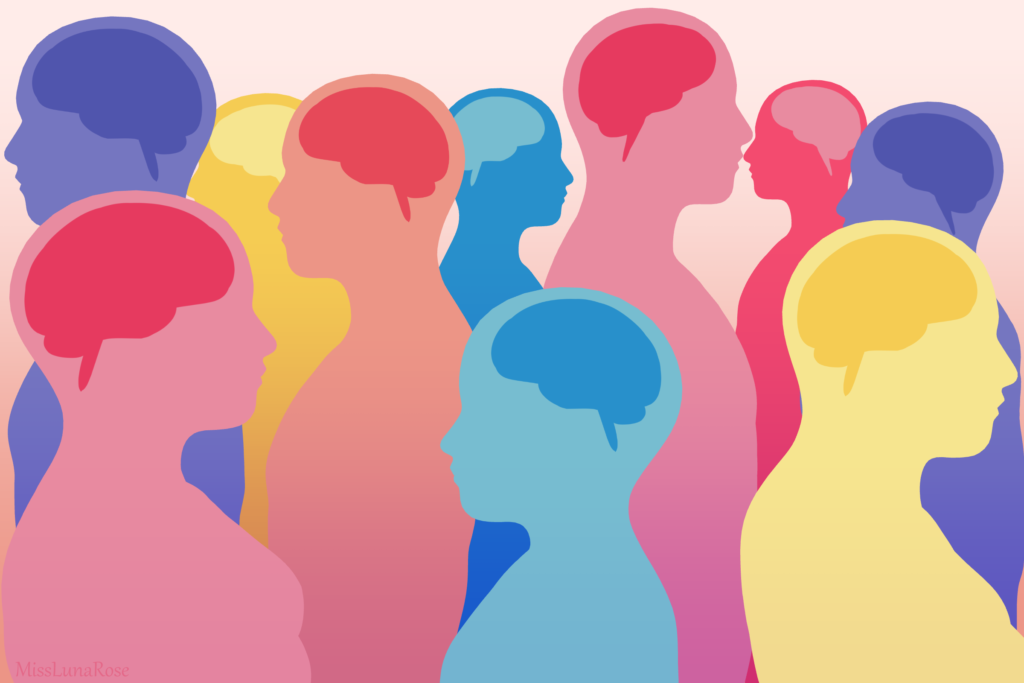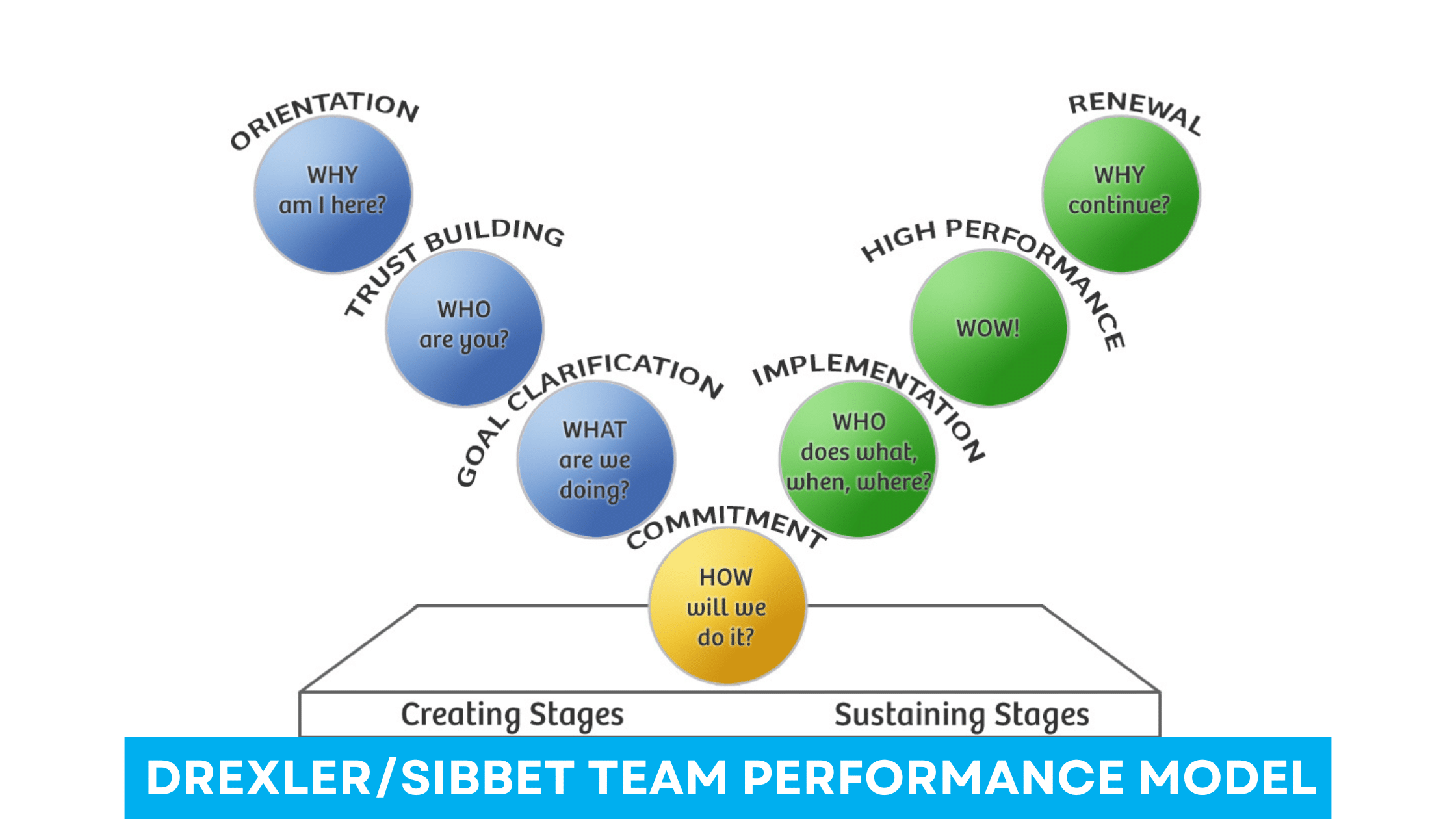Neurodiversity encompasses a range of neurological differences often overlooked in traditional workplace models. Within this spectrum are individuals with autism, ADHD, dyslexia, and other neurological variations. As organizations strive to innovate and solve complex problems, neurodiversity presents itself as an untapped superpower with the potential to drive creativity and bring unique perspectives to a team. Such cognitive diversity can be a critical asset in modern work environments’ complex, fast-paced nature.
However, the potential of neurodiverse individuals remains largely underutilized, with traditional work structures and biases leading to underemployment of this population. With a more inclusive approach, the workplace benefits from the distinct problem-solving skills and innovative thinking patterns of neurodiverse individuals. Integrating neurodiversity into the fabric of corporate culture enhances the talent pool and paves the way for advancements that align with a diverse consumer base and a globalized market.
The integration of neurodiverse talent into the workforce necessitates the reevaluation of recruitment, development, and management practices. Acknowledging neurodiversity as an asset rather than a liability calls for a shift in workplace dynamics and a drive towards a more adaptable and empathetic workplace culture. As a result, fostering a neurodiverse workforce is a social responsibility and a strategic business move with the potential for a significant return on investment, catalyzing innovation, and sustaining competitive advantage.
The Concept of Neurodiversity
Comprehending neurodiversity entails acknowledging the diverse spectrum of disparities in individual brain functionality and behavioral characteristics within the spectrum of human diversity. Neurodiversity encompasses a spectrum that includes neurodivergent conditions like autism, ADHD, and dyslexia, advocating for diversity of thought and the value it brings to a workforce.
Defining Neurodiversity and Its Spectrum
Neurodiversity is the notion that neurological differences are to be recognized and respected as a social category similar to ethnicity, sexual orientation, gender, or disability. These variations in brain function are considered a natural and valuable form of human diversity. Neurodivergent individuals often experience the world differently, with conditions such as autism, ADHD, and dyslexia being some of the more commonly recognized examples within this spectrum. Rather than viewing these patterns of thought and behavior as deficits, the neurodiversity movement posits them as variations that enrich the human experience.
It’s essential to recognize that mental well-being can contribute to neurodiversity, even though it differs from experiencing neurodivergence. Mental health issues can affect anyone, while neurodivergence refers specifically to neurodevelopmental conditions.
- Neurodivergent Conditions:
- Autism: A developmental condition characterized by challenges with social interaction and communication and often accompanied by unique strengths.
- Dyslexia: Characterized by challenges in precise and smooth identification of words, decoding, and spelling, constituting a learning difficulty.
- ADHD, or Attention-Deficit/Hyperactivity Disorder, manifests through tendencies of inattentiveness and/or hyperactivity-impulsivity.
Benefits of a Neurodiverse Workforce
The benefits of a neurodiverse workforce are many and varied. Embracing neurodiversity promotes inclusivity and brings a breadth of perspectives that can lead to increased creativity and innovation. Individuals with neurodivergent traits can offer unique skills and thought processes, capitalizing on strengths like pattern recognition, memory, or detail-oriented thinking.
- Advantages for organizations include:
- Diversity of Thought: Enhances problem-solving and drives innovation by combining different perspectives.
- Talent Utilization: Harnesses the particular skill sets and abilities of neurodivergent individuals.
- Enhanced Team Dynamics: Encourages adaptability and understanding within diverse teams, promoting a healthy work environment.
By acknowledging and harnessing these differences, companies can create a competitive edge and foster a more dynamic work culture.
Building an Inclusive Workplace
In crafting an inclusive workplace, it is essential to establish a neurodiversity-friendly culture and to implement supportive policies that foster innovation and equity. These steps are about compliance and valuing diversity as a wellspring for new ideas and perspectives.
Creating a Neurodiversity-friendly Culture
An inclusive workplace culture begins by openly acknowledging the value that neurodiverse individuals bring to the table. The first step is recognizing that differences in neurological makeup can contribute to a company’s innovative capabilities. To do this, organizations can:
- Educate Employees: Training sessions on neurodiversity help demystify the subject and create an environment of empathy and support. Employees become better collaborators and allies by understanding how diverse thought processes can affect work and interaction.
- Promote Inclusivity in Team Dynamics: Encourage teams to incorporate various perspectives, including those from neurodiverse individuals, in brainstorming sessions and problem-solving scenarios. Such diversity often leads to increased innovation and boosts a company’s competitive edge.
Implementing Supportive Policies
Policies and accommodations represent a company’s commitment to diversity, equity, and inclusion. Effective policies that support neurodiverse employees might include:
- Flexible Schedules and Work Environments: Recognizing that traditional 9-to-5 work schedules may not be optimal for everyone, companies can offer flexible schedules to accommodate various working styles and needs.
- Accessibility of Resources: Remove barriers by providing access to assistive technologies and by making work materials compatible with different learning and processing styles. This proactive gesture of support can lead to increased morale and productivity.
By integrating these approaches, organizations lay the groundwork for a truly inclusive company culture where every employee’s potential can be realized and appreciated.
Harnessing Neurodiverse Talent
To effectively harness neurodiverse talent, organizations must refine their recruitment strategies and provide robust mentorship and career development opportunities that cater to the unique strengths and needs of neurodivergent individuals.
Recruitment Strategies
Companies seeking to build a diverse workforce should implement targeted neurodiversity hiring practices within their hiring process. This begins with job descriptions written in clear, concise language that outlines essential functions without unnecessary jargon. During interviews, they should offer various formats, like written questionnaires or problem-solving sessions, allowing candidates to demonstrate their skills in a comfortable setting.
- Job Listings: Use straightforward language; highlight clearly defined role requirements.
- Application Process: Offer multiple submission formats (e.g., video, portfolio, traditional resume).
- Interviews: Structure to accommodate different communication styles; for example, allow for written responses or practical demonstrations of skills.
Organizations may also create hiring programs specifically tailored for neurodivergent applicants, often in partnerships with community organizations and advocacy groups. These programs not only source neurodiverse candidates but provide guidance on how best to integrate them into existing teams.
Mentorship and Career Development
Once hired, neurodivergent people benefit from inclusively designed mentorship and career development practices. Companies should pair neurodiverse employees with mentors who are trained in neurodiversity awareness and can advocate for their mentees’ unique perspectives and strengths.
- Mentoring Programs: Implement with neurodiversity-trained mentors; facilitate regular check-ins and adaptive learning plans.
- Career Pathing: Define clear career development trajectories with milestones; customize professional growth opportunities based on individual goals and talents.
Professional development workshops should be inclusive, with accessible content to all learning styles, while performance evaluations should be transparent and offer constructive, straightforward feedback that appreciates diverse thinking patterns. By fostering an environment where neurodivergent individuals can thrive, companies unleash the potential of a truly innovative and diverse workforce.
Overcoming Employment Barriers
To attain greater workforce inclusion, tackling the barriers that prevent neurodiverse individuals from accessing employment opportunities is vital. This involves understanding and addressing the challenges within the stigma and the traditional hiring processes that may inadvertently exclude those with neurological differences.
Confronting Stigma and Bias
Discrimination and stigma in the workplace often stem from misconceptions about neurodiversity, particularly around autistic individuals or those with ADHD. Education plays a critical role in dismantling these barriers. Employers and coworkers need tailored training to understand the valuable contributions that neurodiverse employees can bring to their teams. This can include creating materials that highlight the strengths of neurodiverse individuals, such as their attention to detail or unique problem-solving abilities. Addressing bias involves adjusting company policy and nurturing an organizational culture that values diverse perspectives.
Adapting the Interview Process
Traditional interview processes can be a source of anxiety for neurodiverse applicants, which can lead to underperformance and, ultimately, underemployment. A more inclusive approach would adjust these processes to accommodate neurodiverse candidates. For example, providing questions in advance can help reduce anxiety. Employers can also offer alternative modes of assessment, such as work trials or practical tasks, which can more accurately demonstrate an applicant’s capabilities. The goal is to create an interview process that identifies true talent by allowing candidates to showcase their abilities in a comfortable and supportive environment.

Workplace Dynamics and Productivity
Within the realm of corporate performance, embracing neurodiversity has been shown to positively impact both workplace dynamics and productivity. When companies leverage the unique skill sets of neurodiverse individuals, they can foster more innovative teams and drive tangible improvements in their problem-solving capabilities.
Teamwork and Neurodiverse Contributions
In environments where neurodiversity is valued, teams are often more dynamic and creative. Neurodiverse individuals may bring distinct perspectives to problem-solving processes, contributing to richer ideas and solutions. For example, autistic individuals might excel in pattern recognition and attention to detail, enhancing a team’s analytical strength.
- Diverse Skill Sets: Teams with neurodiverse members can draw from a broader range of skills.
- Enhanced Collaboration: Valuing different ways of thinking encourages teams to be more open and collaborative.
By integrating a diverse range of neurodiverse skills, teams enhance both inclusivity and productivity. This is achieved by fostering a capacity to tackle challenges from multiple perspectives and engage in creative, out-of-the-box thinking.
Measuring Productivity Gains
Quantifying the impact of neurodiversity on productivity can be observed through increased efficiency, innovation, and employee engagement. Metrics often show that neurodiverse teams can outperform their peers, especially in complex tasks that benefit from their unique capabilities.
- Innovation Rates: Higher levels of innovation stemming from diverse thinking styles.
- Efficiency Metrics: Improvements in processes and completion of tasks with neurodiverse contributions.
As diverse teams contribute different perspectives, they revitalize problem-solving efforts that underpin productivity gains. Businesses acknowledging the significance of diversity are better positioned to harness the complete spectrum of advantages arising from a workforce that embraces neurodiversity.
The Role of Leadership and Training
In embracing neurodiversity, leadership is the keystone in cultivating an inclusive workplace, while training is the tool that equips employees with the necessary understanding and skills. Effective management and development of neurodiverse talent can lead to increased innovation, employee retention, and a broader range of organizational problem-solving strategies.
Educating Managers and Colleagues
Leaders are essential in establishing a positive atmosphere for embracing and supporting neurodiversity in the professional environment. They must be educated on the importance of an inclusive environment for neurodiverse employees, understanding how to leverage their unique abilities. This involves providing leaders with comprehensive training that covers different aspects of neurodiversity and how to manage it effectively, ensuring that they recognize the benefits of cognitive diversity.
- Comprehensive awareness programs: Equip managers with knowledge regarding the strengths that neurodiverse individuals bring to a team.
- Practical inclusion strategies: Instruct leaders on implementing strategies that support the specific needs of neurodiverse employees.
Developing Tailored Training Programs
To unlock the full potential of neurodiverse staff, companies must create customized training initiatives that cater to diverse learning styles and individual preferences. Such programs allow employees to thrive by capitalizing on their strengths and providing them with the tools they need to succeed.
- Customized learning materials: High-contrast visuals, step-by-step instructions, and interactive elements cater to different neurodiverse profiles.
- Specialized support systems: On-the-job mentorship and peer support networks can facilitate smoother integration and ongoing development.
By focusing on the dual pillars of leadership and training, an organization sets a foundation for success in harnessing the untapped potential of neurodiverse talent.
Strategic Initiatives and Programs
Strategic initiatives and programs centered around neurodiversity are leveraging untapped potential within the workforce. These efforts focus on integrating diverse neurological abilities into a cohesive and productive environment, addressing key areas of diversity, equity, and inclusion (DEI).
Corporate Examples and Case Studies
IBM spearheads an inclusive approach with its neurodiversity program, which has set a benchmark in fostering a supportive work culture that values varied neural functioning as a corporate asset. They have established dedicated support systems and professional development programs to enhance the employee experience for neurodivergent individuals.
Conversely, SAP launched the Autism at Work initiative, which not only actively recruits neurodivergent talent but also provides a robust framework for their integration and advancement within the company. SAP’s clear recognition of the strengths that neurodivergent individuals bring to the table stands as a leading example for other organizations.
Affinity groups within these companies serve as a platform for neurodiverse employees to connect and share experiences, thereby enriching the collective employee experience and fostering a sense of community.
Analytics and DEI Metrics
Measurement and data analysis are crucial factors in the triumph of Diversity, Equity, and Inclusion (DEI) efforts. Tracking progress, such as retention rates of neurodivergent employees, provides tangible evidence of a program’s impact. Companies like Uptimize offer resources to assist organizations in training and equipping their workforce to embrace neurodiversity effectively.
SAP and IBM underscore using data to refine their strategies, ensuring continual improvement in creating an inclusive environment. DEI metrics not only aid in measuring current success but also help identify areas for future development. Quantitative data combined with qualitative feedback from neurodivergent employees informs these companies on the effectiveness of programs and policies in place.
The Future of Neurodiversity at Work
The recognition of neurodiversity is predicted to reshape workplaces, leveraging untapped talent to address labor shortages and foster business growth.
Predicting Trends and Challenges
It’s anticipated that the future of work will increasingly value neurodiverse individuals as key contributors to innovation and problem-solving. Companies may seek competitive advantages by hiring neurodiverse individuals with unique perspectives and skills. This shift can enrich workplace diversity, driving business growth. However, integrating neurodiverse employees will present challenges, such as adapting recruitment processes and providing accommodations that foster productivity and comfort.
Confronting these obstacles necessitates a dedication to fostering education and establishing environments that embrace inclusivity. Tailored training programs and support structures can facilitate better integration and ensure that untapped talent does not remain idle. Organizations may also need to confront existing biases and misconceptions about neurodiversity, requiring a culture shift toward greater acceptance and understanding.
Long-term Impact and Societal Benefits
Incorporating neurodiversity in the workplace is expected to have a profound long-term impact on individual businesses and society as a whole. By harnessing the capabilities of neurodiverse individuals, organizations can improve staff morale and productivity while also addressing broader labor gaps.
| Impact Area | Societal Benefits |
| Business Performance | Increased innovation, productivity, and competitive edge. |
| Labor Market | Reduction in labor shortages through a diversified talent pool. |
| Social Responsibility | Enhanced inclusivity upholds social justice principles. |
| Employee Well-being | Improved workplace morale and engagement. |
Businesses that invest in neurodiverse employment initiatives can also position themselves as leaders in social responsibility, enhancing their brand reputation and attracting both customers and potential employees who value inclusivity. As enterprises prioritize these values, they play a part in fostering a future where everyone can contribute meaningfully to society.



